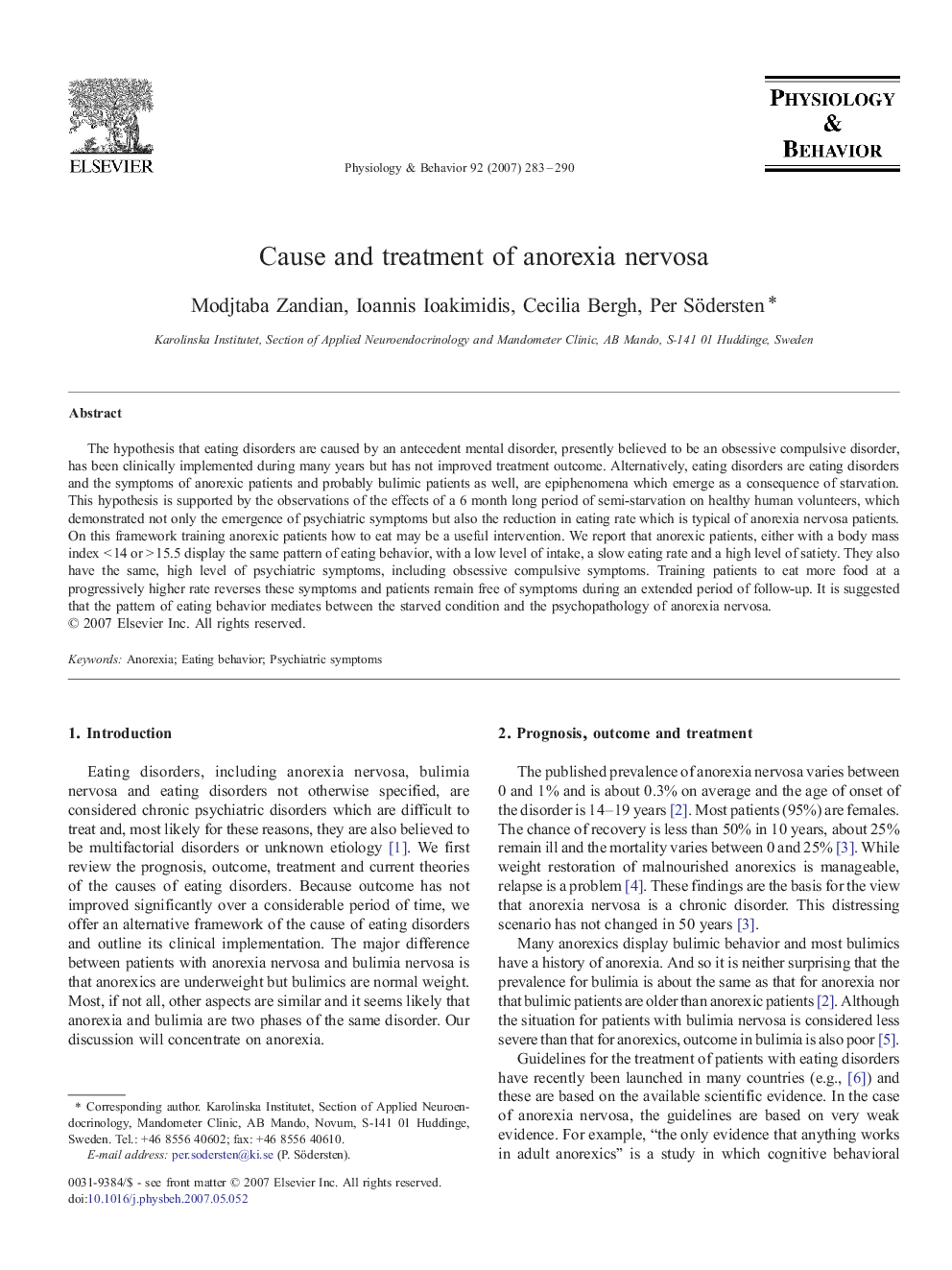| Article ID | Journal | Published Year | Pages | File Type |
|---|---|---|---|---|
| 2845996 | Physiology & Behavior | 2007 | 8 Pages |
The hypothesis that eating disorders are caused by an antecedent mental disorder, presently believed to be an obsessive compulsive disorder, has been clinically implemented during many years but has not improved treatment outcome. Alternatively, eating disorders are eating disorders and the symptoms of anorexic patients and probably bulimic patients as well, are epiphenomena which emerge as a consequence of starvation. This hypothesis is supported by the observations of the effects of a 6 month long period of semi-starvation on healthy human volunteers, which demonstrated not only the emergence of psychiatric symptoms but also the reduction in eating rate which is typical of anorexia nervosa patients. On this framework training anorexic patients how to eat may be a useful intervention. We report that anorexic patients, either with a body mass index < 14 or > 15.5 display the same pattern of eating behavior, with a low level of intake, a slow eating rate and a high level of satiety. They also have the same, high level of psychiatric symptoms, including obsessive compulsive symptoms. Training patients to eat more food at a progressively higher rate reverses these symptoms and patients remain free of symptoms during an extended period of follow-up. It is suggested that the pattern of eating behavior mediates between the starved condition and the psychopathology of anorexia nervosa.
